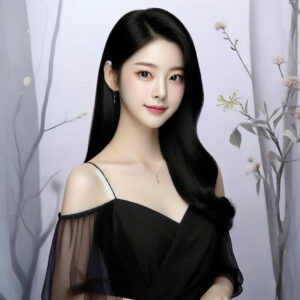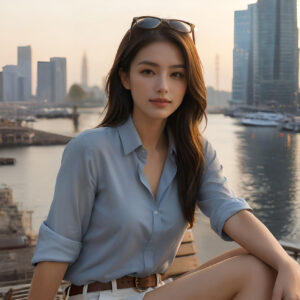Embark on a fascinating journey delving into the intricate world of cultural beauty standards through the lens of AI. From ancient traditions to modern influences, this exploration promises to uncover the diverse and evolving definitions of beauty across different societies.
 As we navigate through the nuances of cultural standards of beauty, we will unveil intriguing insights that shed light on the profound impact these standards have on shaping our perceptions and ideals.
As we navigate through the nuances of cultural standards of beauty, we will unveil intriguing insights that shed light on the profound impact these standards have on shaping our perceptions and ideals.
 Beauty standards have undergone significant changes throughout history, reflecting the values, beliefs, and societal norms of different time periods. These changes are influenced by various factors such as culture, media, economics, and politics.
Beauty standards have undergone significant changes throughout history, reflecting the values, beliefs, and societal norms of different time periods. These changes are influenced by various factors such as culture, media, economics, and politics.
 AI technology has revolutionized the way we analyze and understand cultural standards of beauty. By utilizing machine learning algorithms and data processing capabilities, AI can provide valuable insights into how beauty ideals vary across different cultures and time periods.
AI technology has revolutionized the way we analyze and understand cultural standards of beauty. By utilizing machine learning algorithms and data processing capabilities, AI can provide valuable insights into how beauty ideals vary across different cultures and time periods.
 Representation in media plays a crucial role in shaping cultural beauty standards by highlighting certain ideals of beauty and attractiveness.
Representation in media plays a crucial role in shaping cultural beauty standards by highlighting certain ideals of beauty and attractiveness.
 As we navigate through the nuances of cultural standards of beauty, we will unveil intriguing insights that shed light on the profound impact these standards have on shaping our perceptions and ideals.
As we navigate through the nuances of cultural standards of beauty, we will unveil intriguing insights that shed light on the profound impact these standards have on shaping our perceptions and ideals.
Definition of Cultural Standards of Beauty
Cultural standards of beauty refer to the ideals and norms that societies or specific cultural groups consider attractive or desirable in terms of physical appearance. These standards are influenced by various factors such as history, traditions, social norms, and media representations.Examples of Cultural Beauty Standards
- In Western cultures, slim figures, clear skin, and symmetrical facial features are often considered beautiful.
- In some African cultures, fuller figures and intricate body markings are seen as attractive.
- In parts of Asia, pale skin, small faces, and double eyelids are commonly associated with beauty.
Impact of Cultural Standards of Beauty on Society
Cultural standards of beauty play a significant role in shaping societal perceptions and behaviors. They can influence self-esteem, body image, and even economic opportunities. For example, individuals who do not conform to the prevalent beauty standards in their culture may face discrimination or feel pressured to undergo cosmetic procedures to fit in. Additionally, these standards can perpetuate stereotypes and contribute to the perpetuation of unrealistic beauty ideals in the media.Evolution of Beauty Standards
 Beauty standards have undergone significant changes throughout history, reflecting the values, beliefs, and societal norms of different time periods. These changes are influenced by various factors such as culture, media, economics, and politics.
Beauty standards have undergone significant changes throughout history, reflecting the values, beliefs, and societal norms of different time periods. These changes are influenced by various factors such as culture, media, economics, and politics.
Ancient Beauty Standards
In ancient civilizations, beauty standards often emphasized characteristics such as symmetry, youthfulness, and fertility. For example, in ancient Egypt, smooth and clear skin was considered attractive, while in ancient Greece, a slim and athletic body was idealized.Medieval and Renaissance Beauty Standards
During the medieval and Renaissance periods, beauty standards shifted towards a more voluptuous figure, symbolizing wealth and fertility. Fair skin and rosy cheeks were also highly prized, as they indicated a life of luxury and leisure.Victorian Beauty Standards
In the Victorian era, modesty and restraint were key factors in beauty standards. Pale skin, delicate features, and a small waistline were considered the epitome of beauty, reflecting notions of purity and femininity.Modern Beauty Standards
Today, beauty standards have become more diverse and inclusive, with a greater emphasis on individuality and self-expression. While traditional ideals of beauty still exist, there is a growing acceptance of different body types, skin tones, and facial features in mainstream media and popular culture.Factors Influencing Changes in Beauty Standards
The evolution of beauty standards is influenced by a combination of factors, including globalization, technological advancements, social movements, and the rise of social media. These factors contribute to a more dynamic and fluid concept of beauty that continues to evolve over time.AI in Analyzing Cultural Standards of Beauty
 AI technology has revolutionized the way we analyze and understand cultural standards of beauty. By utilizing machine learning algorithms and data processing capabilities, AI can provide valuable insights into how beauty ideals vary across different cultures and time periods.
AI technology has revolutionized the way we analyze and understand cultural standards of beauty. By utilizing machine learning algorithms and data processing capabilities, AI can provide valuable insights into how beauty ideals vary across different cultures and time periods.
Role of AI in Analyzing Beauty Standards
AI algorithms can analyze vast amounts of data from social media, historical texts, and other sources to identify trends and patterns in cultural beauty standards. By examining images, text, and user interactions, AI can help researchers and marketers understand what qualities are considered attractive in different societies.- Facial Recognition: AI-powered facial recognition software can identify common features associated with beauty in different regions.
- Social Media Analysis: AI tools can analyze social media trends and user-generated content to determine popular beauty standards.
- Historical Text Analysis: AI can analyze historical texts and artworks to track the evolution of beauty standards over time.
AI can provide a more objective and data-driven approach to understanding cultural beauty standards, eliminating biases that may arise from human interpretation.
Benefits and Limitations of AI in Analyzing Beauty Standards
- Benefits:AI can process large amounts of data quickly, identify subtle trends, and provide insights that may not be apparent to humans. It can also offer a more standardized and consistent analysis of beauty standards across different cultures.
- Limitations:AI algorithms may not always capture the nuances of cultural beauty standards, as these can be highly subjective and context-dependent. Additionally, biases in the data used to train AI models can lead to skewed results.
Representation in Media and Cultural Beauty Standards
 Representation in media plays a crucial role in shaping cultural beauty standards by highlighting certain ideals of beauty and attractiveness.
Representation in media plays a crucial role in shaping cultural beauty standards by highlighting certain ideals of beauty and attractiveness.
Impact of Media on Societal Perceptions of Beauty
Media has a significant impact on how beauty is perceived in society, often promoting narrow standards that can lead to unrealistic expectations and low self-esteem among individuals. The constant exposure to idealized images of beauty in advertisements, movies, and social media platforms can create a distorted view of what is considered beautiful.- Media portrayal of beauty often focuses on Eurocentric features, leading to the marginalization of diverse beauty standards.
- Representation of beauty in media can reinforce stereotypes and perpetuate harmful beauty norms, affecting how individuals perceive themselves and others.
- The lack of diversity in media representation can contribute to a limited and exclusionary view of beauty, excluding individuals who do not fit the conventional standards.
AI in Improving Representation of Diverse Beauty Standards
Artificial Intelligence (AI) technology can play a vital role in improving representation of diverse beauty standards in media by offering more inclusive and accurate portrayals of beauty.- AI algorithms can analyze and identify biases in existing media content, helping creators understand the need for diversity and inclusivity in their representations of beauty.
- By utilizing AI-powered tools, media platforms can curate content that reflects a broader range of beauty standards, promoting acceptance and celebration of diverse appearances.
- AI can assist in identifying underrepresented groups in media and provide insights for content creators to incorporate more inclusive representations of beauty in their work.
Globalization and Cultural Beauty Standards
Globalization has had a significant impact on cultural beauty standards around the world. As different cultures interact and influence each other more than ever before, beauty ideals have become more diverse and interconnected. This has led to a blending of traditional beauty standards with modern influences, creating a globalized concept of beauty that is constantly evolving.Impact of Globalization on Beauty Standards
- Globalization has allowed for the exchange of beauty trends, products, and ideas across different regions.
- As a result, beauty ideals have become more inclusive and diverse, incorporating features and characteristics from various cultures.
- This has also led to a shift towards accepting and celebrating unique traits that were previously considered unconventional or non-traditional.
Cross-cultural Comparison of Beauty Ideals
- Beauty standards vary greatly across different regions due to cultural influences, historical backgrounds, and societal norms.
- For example, while some cultures prioritize fair skin as a symbol of beauty, others value darker skin tones.
- Facial features, body shapes, and hair textures also play a significant role in defining beauty standards in different parts of the world.
Role of AI in Promoting Cross-cultural Understanding
- Artificial intelligence plays a crucial role in analyzing and interpreting cultural beauty standards from a global perspective.
- AI algorithms can identify patterns and trends in beauty preferences across different regions, helping to bridge the gap between diverse beauty ideals.
- By utilizing AI technology, researchers and beauty experts can gain valuable insights into how beauty standards are evolving and adapting in a globalized world.












